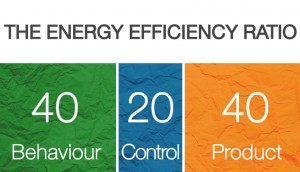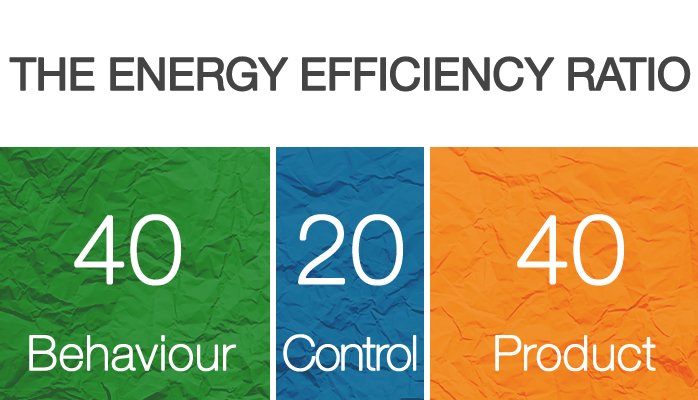Launch of the EMA 40:20:40 Energy Efficiency Ratio
Energy efficiency is often seen as a process of replacing inefficient products with efficient products; however this seems a simple view of a complex problem. A simple ratio has been adopted by the Energy Managers Association (EMA) as a guide to understanding how energy efficiency can be valued.
The three main elements of energy efficiency are energy efficient product, building control systems and behaviour change. Allocating importance to these three areas is to a degree guess work, however the general consensus amongst experienced energy managers is that the 40:20:40 split is a fair estimate. The reason for promoting this ratio is that many decisions to achieve energy efficiency are often based on only one part of the ratio, with two remaining elements ignored.
Building controls are frequently used to match power-use to occupancy of a building, but even these systems can fail if unusual events happen or work patterns shift. Energy efficient products are understood to be a quick gain and the most common solution to achieve energy savings. Companies see energy efficiency as a process based on efficient equipment, energy efficient lighting might limit the amount of power used, but switching the lights off whilst not needed, must be the ultimate goal. Behaviour change is the most flexible and cheapest solution to energy management but is often ignored as too effortful to do.
Understanding and promoting this ratio will make companies not only environmentally sustainable but also reduce their operational and financial risk that the cost, supply and security of energy will pose to companies in the near future.
Energy efficiency is not an end in itself; it is a method of reducing the energy used whilst a system is in use. The most efficient use of energy is not to use it in the first place. This has to be the starting point in achieving energy reduction. Without human intervention there is no energy use and whilst this sounds simplistic the human factor is very often ignored.
Behaviour change is often seen as in the too difficult to do box even though it could be the cheapest and most effective form of energy efficiency. It has been largely ignored in the workplace, whilst HSE is mandatory training for many employees, energy training which could save companies significant amounts of money, is ignored. . When was the last time you went on a company promoted energy efficiency course?
The EMA runs Low Energy Company (LEC) training, accrediting employees who have taken and completed courses that meet the EMA standards. The aim is not only to make companies aware of the value or indeed the necessity of energy management training, but also to make the energy managers of the future focus on an area they have often avoided in the past.
A company that has seen the cost saving potential of training is Wickes, the home improvement retailer. It has become one of the first UK organisations to reap the benefits of training their staff in Stage One Low Energy Company training. After training 146 of their staff mainly including store managers, supervisors and key holders, the national DIY retailer saved over £500K on their energy bill in 2014 across their 230 store estate.
In February 2013, Store Manager of Wickes Macclesfield, Neil Chetwynd received his Profit & Loss statement for the previous month. Realising his store had significantly overspent against their budget on electricity, he noticed how bright the store lighting was. “In my office were two switches that operated the two banks of shop floor lights, so I hit the switch and turned a bank of lights off. No one noticed. No calls to the office and no customer complaints.”
On his subsequent visits to the branch, Neil’s Line Manager did not notice anything different about the ambiance of the store. As a result, Neil took steps to roll out an energy reduction programme, including Stage One LEC Training for his staff.
If Wickes have identified and achieved savings through energy awareness training and simple behaviour, why other organisations are so unworldly? The reason many more companies have not embraced the energy saving of behaviour change is because it is so difficult to quantify the saving. It is easy to measure the efficiency of say one lighting system against another; however measuring the impact of different employees in a changing workplace is really difficult to value. Another factor is that training often takes place alongside other energy efficiency measures and attributing the savings to one particular measure can be problematic as the achieved savings become diluted.
The real driver for training in the future may not be the sharp hike in peak time prices in 2016/17, nor cost savings but procurement. There is real financial risk in supply companies having to raise prices in line with increases in energy prices. The way to mitigate this risk is to make sure that the supply company is energy efficient and a simple way of proving this is to train staff. It would be ironic if companies are forced to train to meet the demands of their clients while making it a provision of their own supply chain.
There is one way to make training widespread and that is for the Government to make it mandatory. With power cuts at peak times around the corner this might just happen.
At EMEX, The energy Management Exhibition taking place on 16-17 November, The EMA will address these challenges head-on is the ‘Energy Management as a Profession’ Theatre.


